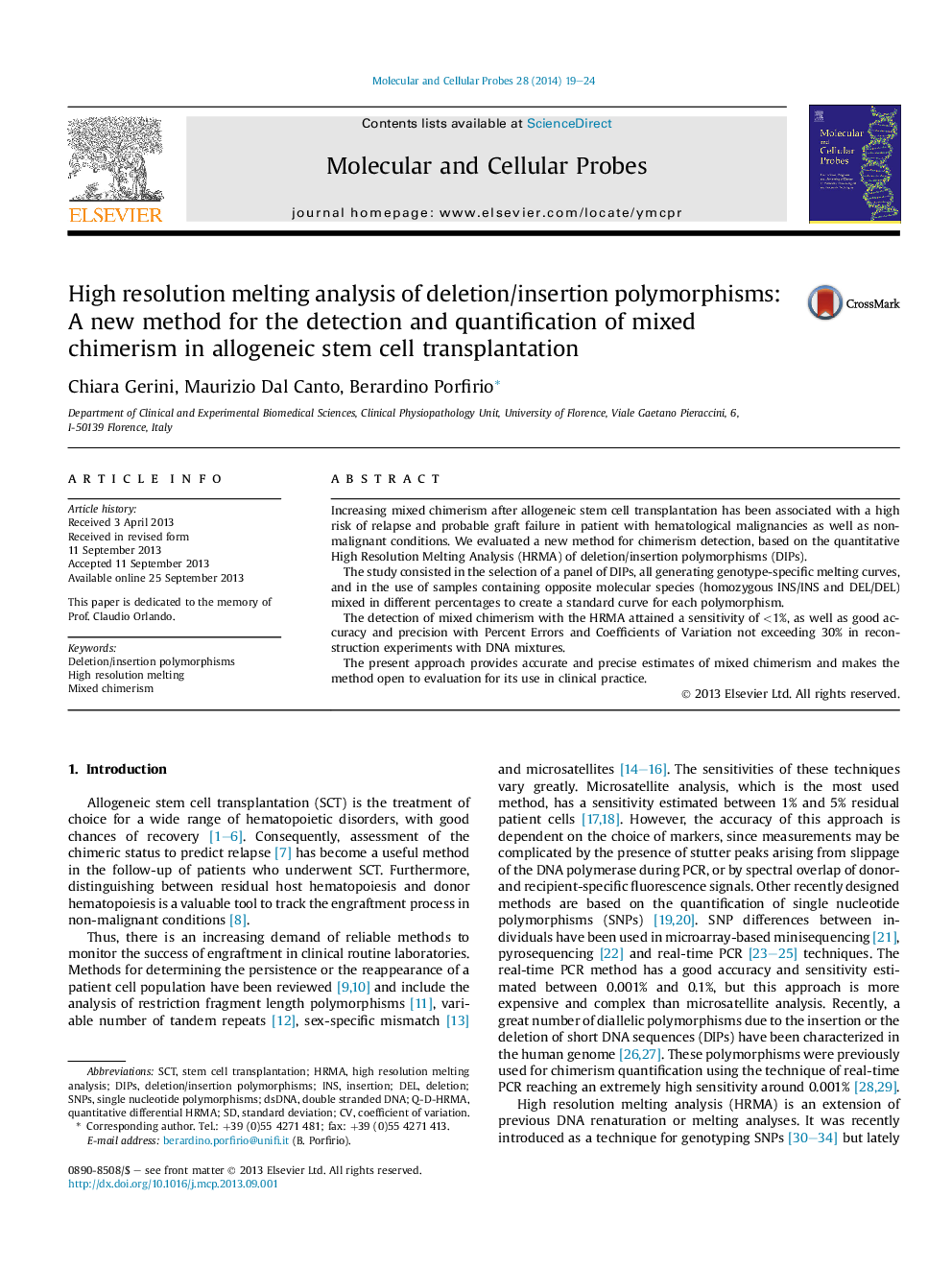| Article ID | Journal | Published Year | Pages | File Type |
|---|---|---|---|---|
| 2199700 | Molecular and Cellular Probes | 2014 | 6 Pages |
Increasing mixed chimerism after allogeneic stem cell transplantation has been associated with a high risk of relapse and probable graft failure in patient with hematological malignancies as well as non-malignant conditions. We evaluated a new method for chimerism detection, based on the quantitative High Resolution Melting Analysis (HRMA) of deletion/insertion polymorphisms (DIPs).The study consisted in the selection of a panel of DIPs, all generating genotype-specific melting curves, and in the use of samples containing opposite molecular species (homozygous INS/INS and DEL/DEL) mixed in different percentages to create a standard curve for each polymorphism.The detection of mixed chimerism with the HRMA attained a sensitivity of <1%, as well as good accuracy and precision with Percent Errors and Coefficients of Variation not exceeding 30% in reconstruction experiments with DNA mixtures.The present approach provides accurate and precise estimates of mixed chimerism and makes the method open to evaluation for its use in clinical practice.
